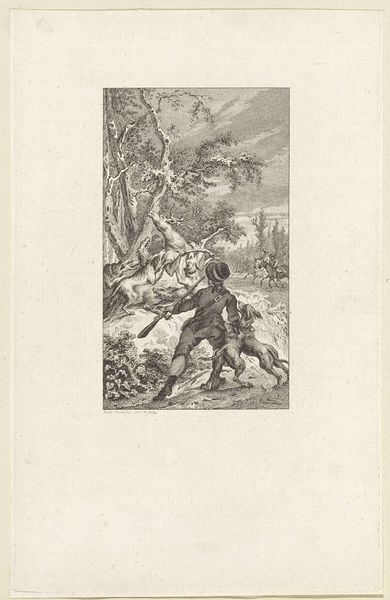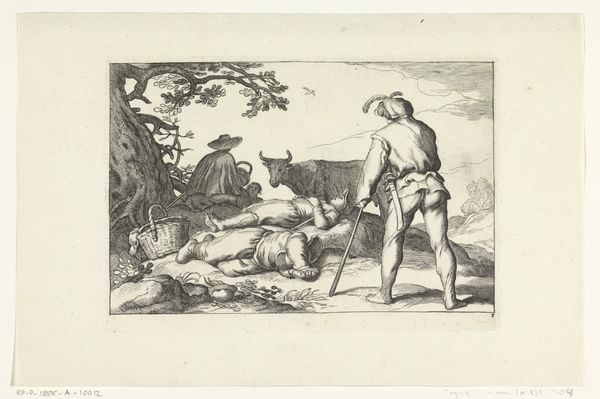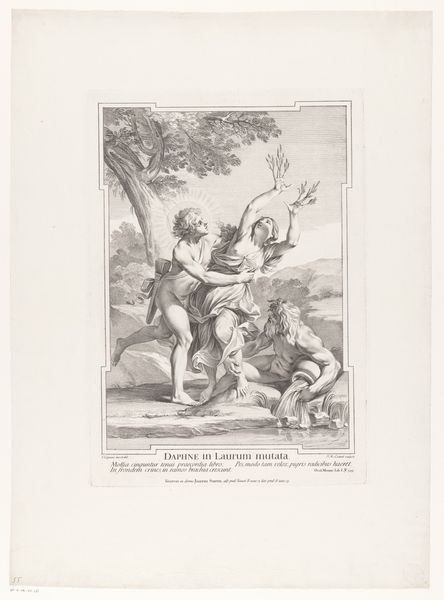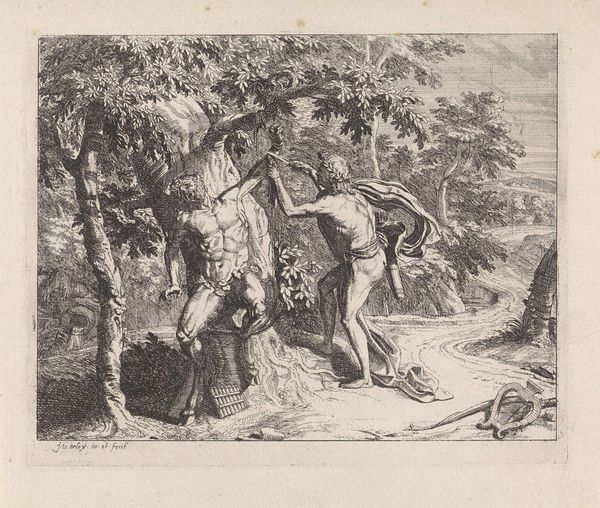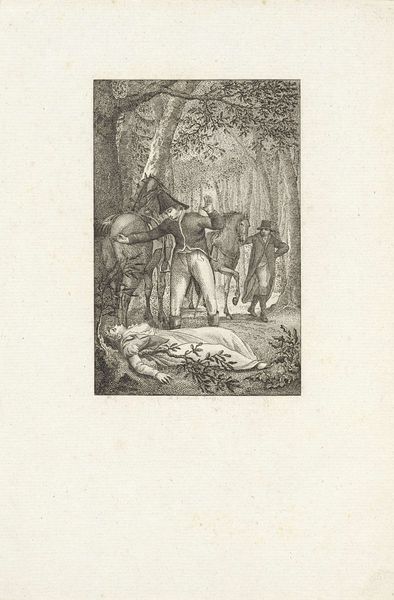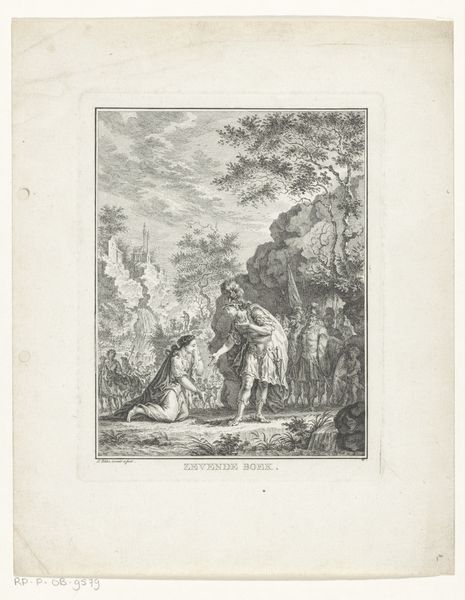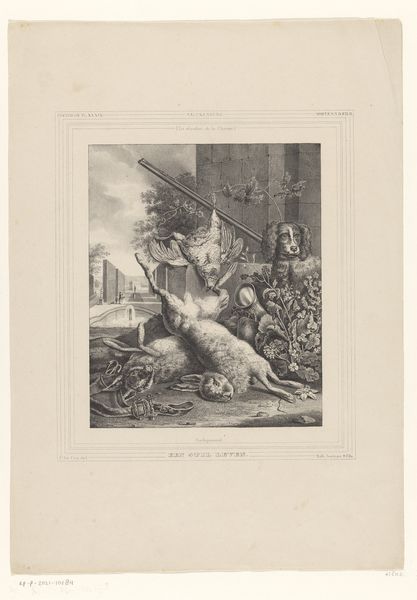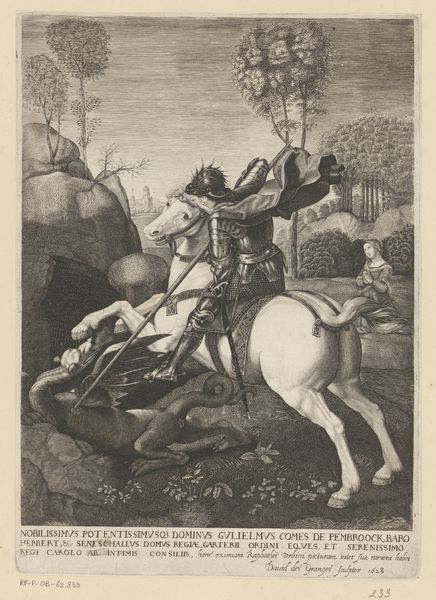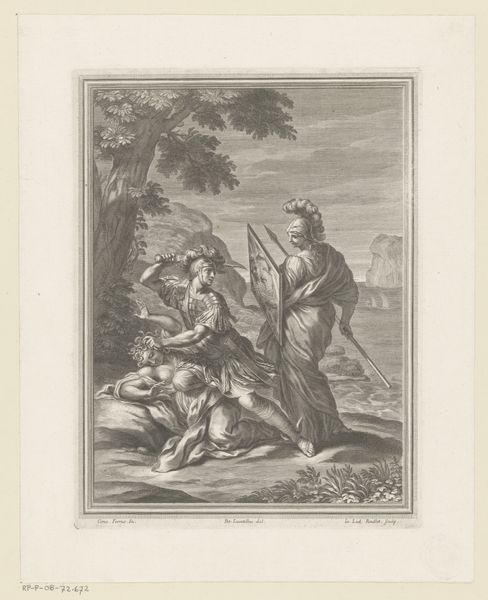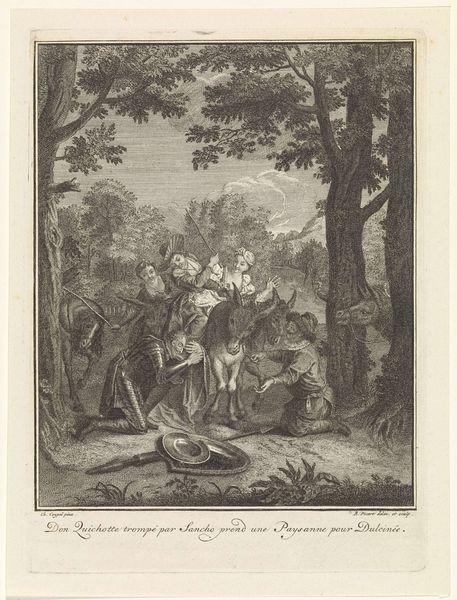
Dimensions: height 143 mm, width 135 mm
Copyright: Rijks Museum: Open Domain
Editor: Here we have "Soldaat met geweer in de hand" by Joannes Bemme, created sometime between 1800 and 1841. It’s an engraving, currently held in the Rijksmuseum. I’m struck by the almost casual violence of it, the soldier stepping over a fallen figure. What symbols jump out at you? Curator: The fallen soldier speaks volumes. Consider the unbuttoned tunic, perhaps indicating a hurried departure from the field of battle or symbolizing a deeper vulnerability, defeat, even the loss of honor. And the rifle itself - what does it mean? Is it power, aggression, or merely the tool of a trade in this era? Editor: That's a great point, thinking of it as his uniform practically undone. Is there a narrative tradition connected to the visual composition of a figure walking on a defeated one? Curator: Precisely. Think about depictions of conquest, dominance, or the ruthless march of progress. Even biblical narratives employ such symbolism to underscore power dynamics, often framing one entity’s ascendancy against another's humiliation or destruction. It evokes cultural memory. Editor: So it’s almost like a visual shorthand. The symbols tell the story without needing many details. Are there more layers to unpack, like the tree in the background? Curator: Ah, yes! Note the fox on the tree in the upper-left corner of the image. Perhaps it functions as a reminder of cunning and wild survival tactics. It underscores that in scenes of conquest, someone is preying on the weak or wounded in the field of combat. It can represent cunning, wit, or deception. The fallen soldier contrasts the agile animal, evoking a reflection on who wins the fight. Editor: This has definitely made me consider images, and visual relationships in general, much differently. I'll try to focus more on iconography as I develop my analysis. Curator: It’s a rewarding path! Keep a close eye for these reoccurring symbols and cultural contexts. They will change the way you understand art for sure.
Comments
No comments
Be the first to comment and join the conversation on the ultimate creative platform.
